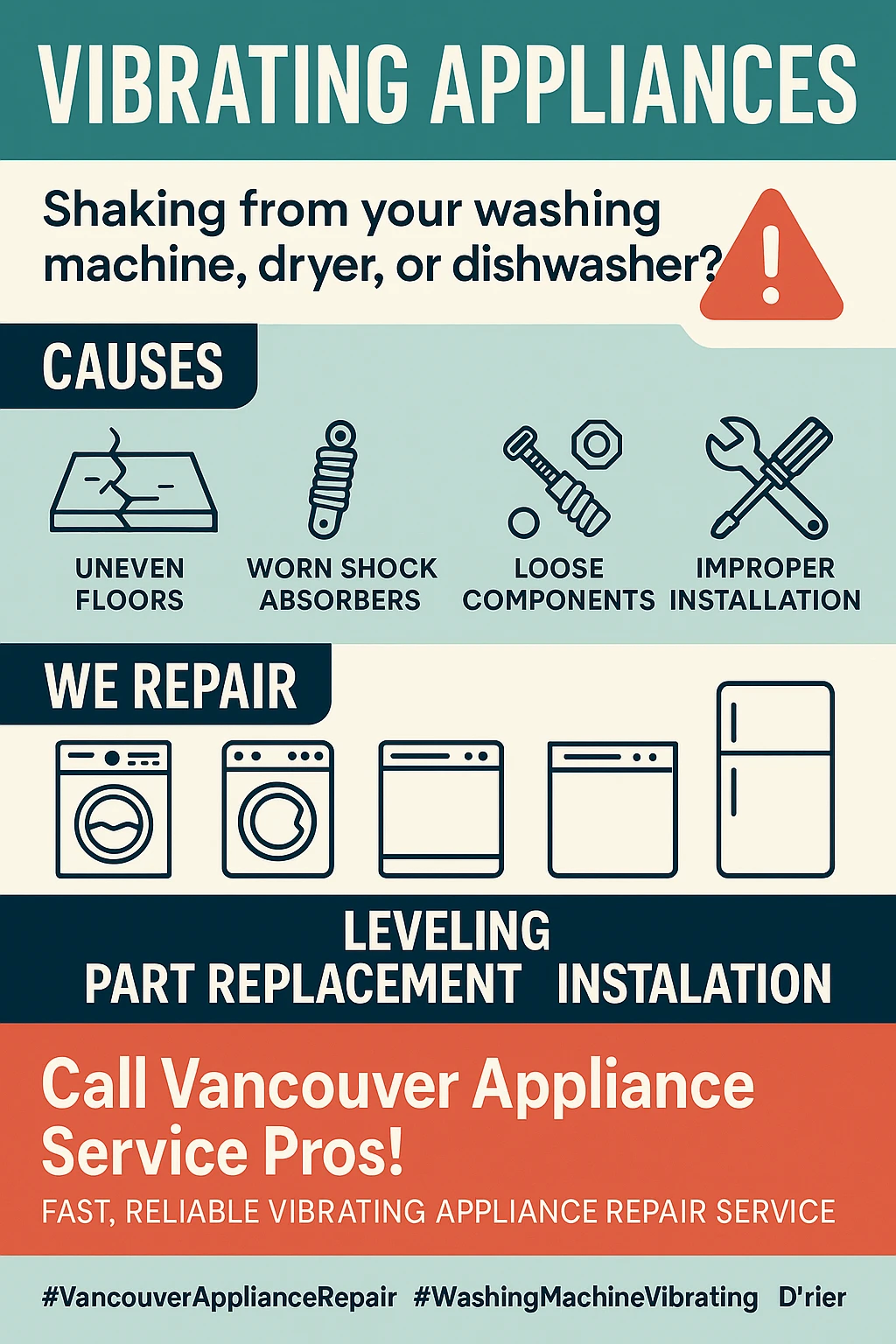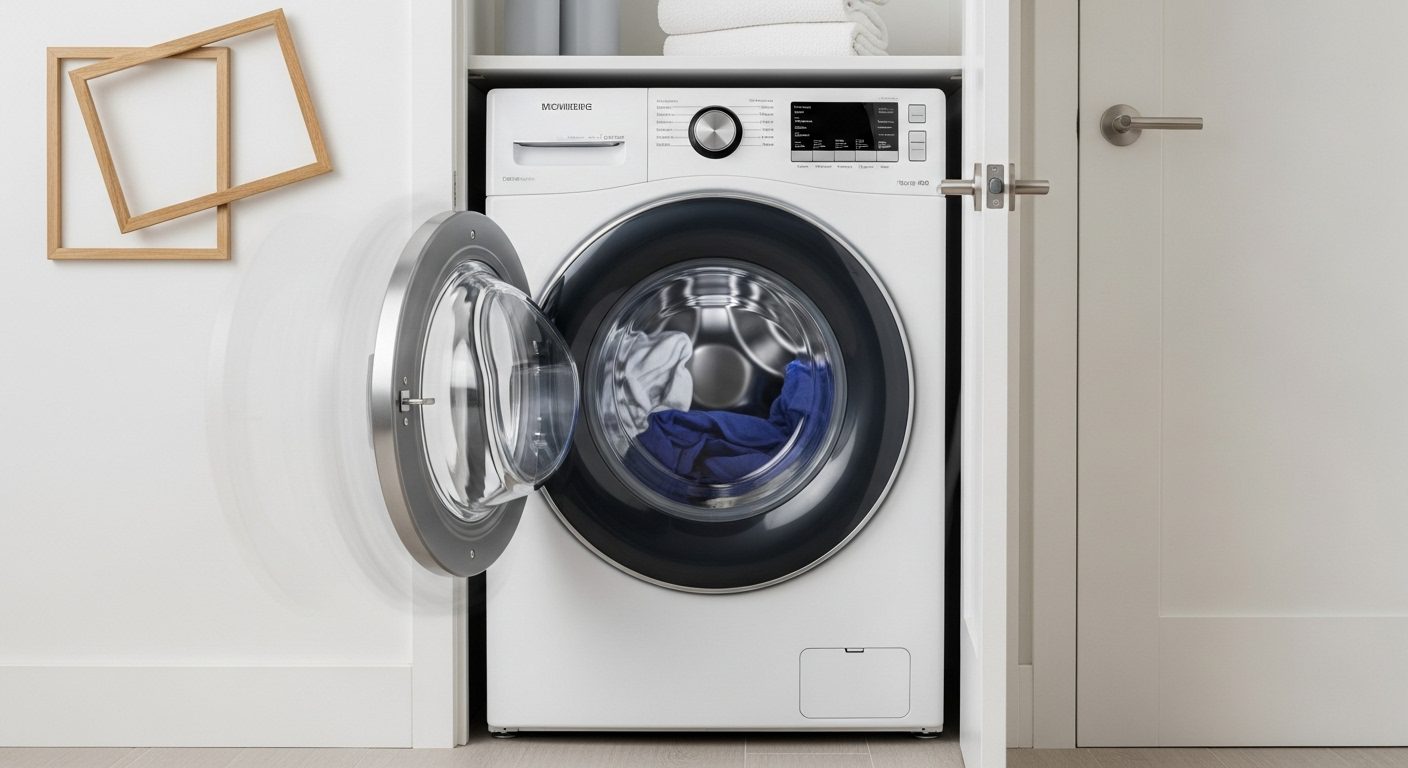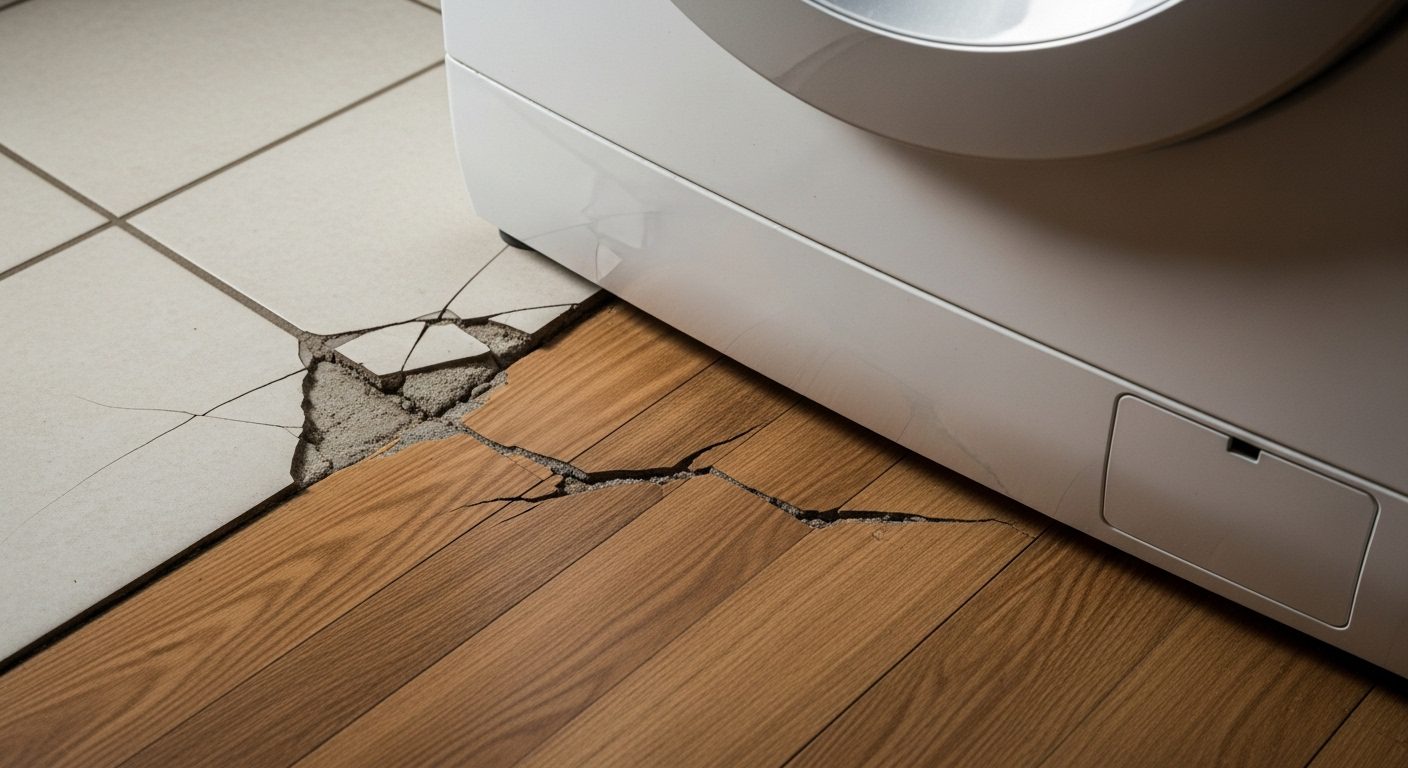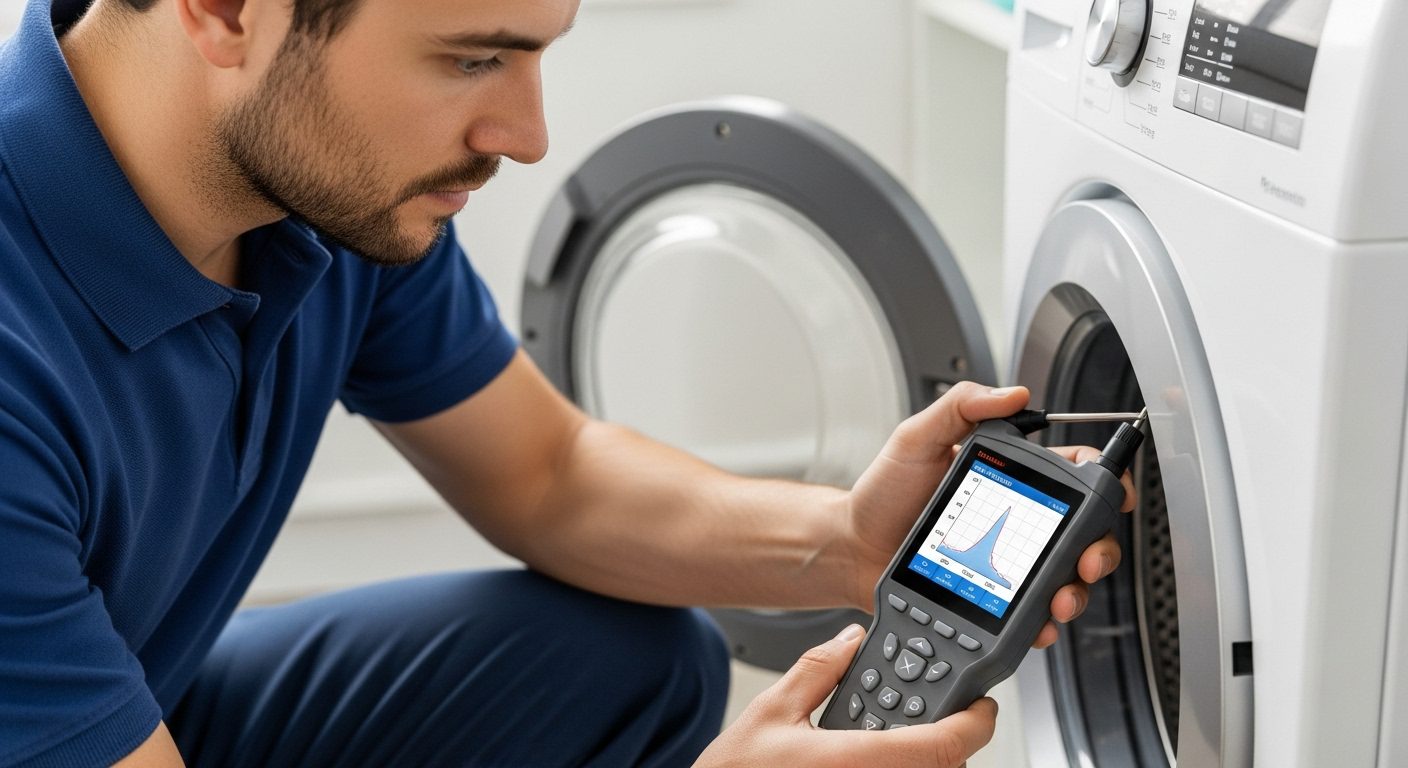Vancouver Appliance Vibration Problems: Why Your Kitchen and Laundry Room Shake and How to Fix It Before Damage Spreads
Tired of your washing machine sounding like it’s trying to escape through the floor? Here’s everything you need to know about those mysterious kitchen and laundry room tremors that are slowly but surely wreaking havoc on your Vancouver home!
Picture this: you’re trying to enjoy a peaceful Sunday morning when suddenly your entire house starts vibrating like there’s a minor earthquake happening. But nope – it’s just your washing machine doing its thing during the spin cycle, and honestly, it’s getting out of hand. If you’re living in Vancouver and dealing with appliances that shake, rattle, and roll their way through every cycle, you’re definitely not alone in this struggle.
The thing is, what starts as just an annoying noise can quickly escalate into serious problems that’ll have you calling contractors instead of appliance repair techs. We’re talking about floor damage, structural issues, and even your other appliances getting affected by all that constant vibration. Vancouver’s unique housing situation – with all those condos, heritage homes, and multi-story buildings – makes these vibration problems even trickier to deal with.
From unbalanced washing machine loads to wonky dishwasher feet, there are tons of reasons why your appliances might be staging their own personal dance party. But here’s the good news: most of these issues are totally fixable once you know what you’re dealing with. Whether you’re handy with DIY solutions or need to call in the pros, we’ve got the inside scoop on getting your home back to its zen state.
Key Outtakes:
- Unbalanced loads and improper appliance leveling cause about 70% of vibration problems in Vancouver homes, making these the first things to check when your appliances start shaking
- Professional anti-vibration solutions can reduce vibration transmission by up to 94.7% while extending your appliance’s lifespan by 15-25%
- Ignoring appliance vibration can lead to floor damage costing $1,000-5,000 and premature appliance failure requiring $800-4,000 in replacement costs
- Vancouver’s prevalence of multi-story housing means vibration problems can affect neighbors and violate strata bylaws, making quick solutions essential
- Professional diagnosis and repair typically costs $200-500 but prevents thousands in potential structural damage and appliance replacement expenses

The Scope of Vancouver’s Appliance Vibration Epidemic
Living in Vancouver means dealing with some pretty unique challenges when it comes to home appliances – and vibration problems are definitely near the top of that list. The reality is that our city’s specific mix of housing types, from cramped condos to century-old heritage homes, creates the perfect storm for appliance-related shaking issues that can drive you absolutely bonkers.
Recent data from Vancouver appliance repair services shows that washing machines are the primary culprits in about 68% of vibration complaints across the Greater Vancouver area. What makes this particularly frustrating is that modern front-loading washers, while super efficient and gentle on clothes, actually create more vibration issues than their top-loading predecessors. These machines spin way faster – we’re talking 1,200 RPM or higher – and all that energy gets transferred directly into your floor structure instead of being absorbed by the machine’s weight distribution like old-school top-loaders.

The problem gets even more complicated when you consider that roughly 65% of Vancouver households live in multi-story buildings where vibration doesn’t just stay put in your unit. That washing machine shimmy on the second floor? Your downstairs neighbor is probably feeling every single spin cycle, and trust me, that’s not the kind of neighborly connection anyone wants. Vancouver Appliance Service Pros reports that unbalanced loads alone account for about 45% of all washing machine vibration complaints they handle, which tells us that a huge chunk of these problems could be prevented with better loading habits and proper maintenance.
What’s really eye-opening is how quickly these “minor” vibration issues can snowball into major headaches. It starts with just some noise during the spin cycle, maybe a little movement that seems harmless enough. But over time, continuous vibration begins to affect not just the appliance itself, but your floors, walls, and even neighboring appliances. The cumulative effect means that ignoring a shaky washing machine today could mean dealing with loose wall fixtures, cracked tiles, or wobbly countertops six months down the road.
From Annoying Noise to Serious Structural Damage
Understanding how appliance vibration progresses from a minor annoyance to legitimate structural damage is crucial for Vancouver homeowners who want to protect their investment. The journey from “that’s kind of loud” to “oh no, my floor is literally damaged” follows a surprisingly predictable pattern that many people don’t recognize until it’s too late.
The initial phase usually involves what seems like harmless noise – maybe your washing machine gets a little enthusiastic during the spin cycle, or your dishwasher sounds like it’s working extra hard. Most of us just turn up the TV or close the laundry room door and think we’ve solved the problem. But what’s actually happening is that continuous micro-vibrations are slowly but steadily working their way through your floor structure, creating stress points that will eventually become visible damage.

Floor damage represents the most immediate and costly consequence of uncontrolled appliance vibration. Vancouver’s expensive real estate market makes this particularly painful – we’re looking at $8-15 per square foot for hardwood replacement and $12-25 per square foot for high-end tile work. The Floor Mat Company reports that floors exposed to continuous vibration from washing machines can develop permanent damage within just 6-12 months of exposure. That might sound dramatic, but think about it: 1,200+ RPM vibrations happening multiple times per week, transferring energy directly into subflooring that wasn’t designed to handle that kind of repeated stress.
What’s even more concerning is how vibration damage compounds over time, creating cascade effects throughout your home’s systems. Research from Consumer Reports has documented cases where front-loading washing machines generated enough vibration to cause structural issues, particularly in multi-story installations where the problem gets amplified through building frameworks. Vancouver homes, especially our heritage buildings, weren’t necessarily designed with modern high-efficiency appliances in mind, so they’re particularly vulnerable to this kind of stress.
The ripple effect extends beyond just floor damage to affect other appliances and home systems in ways that aren’t immediately obvious. A vibrating washing machine can cause nearby dishwashers to experience accelerated wear on their mounting systems, while refrigerators may develop compressor issues if they’re subjected to continuous external vibration. Wall-mounted fixtures start working loose, doors stop closing properly, and in extreme cases, you might even notice minor foundation settling. It’s like a domino effect where one problematic appliance creates problems throughout your entire home ecosystem.
Vancouver’s seismic building codes add another layer of complexity to this issue. Our structures are designed to handle specific types of stress, including earthquake-related movement, but constant low-level vibration from appliances creates a different kind of wear pattern that can potentially compound seismic stress over time. While we’re not talking about catastrophic structural failure here, uncontrolled appliance vibration does represent an additional stress factor that building codes don’t specifically account for.
Professional Diagnosis: The Science Behind Vibration Measurement
When vibration problems get serious enough to require professional intervention, Vancouver’s appliance repair industry has developed some pretty sophisticated approaches to diagnosing and measuring exactly what’s going on with your shaky appliances. Gone are the days when technicians just eyeballed the problem and made educated guesses – modern vibration diagnosis relies on actual scientific measurement that can quantify problems and verify solution effectiveness.
Professional vibration analysis starts with understanding that not all shaking is created equal. Appliances create different types of vibration patterns depending on what’s going wrong, and these patterns have distinct signatures that trained technicians can identify and measure. Advanced diagnostic equipment used by Vancouver repair services includes triaxial accelerometers that measure three key properties of vibration: acceleration, amplitude, and velocity during different phases of appliance operation.

This level of precision allows repair professionals to determine whether your appliance’s vibration levels fall within acceptable ranges or cross into territory that requires immediate intervention. Vancouver appliance repair services report that about 60% of vibration complaints can be resolved through professional leveling and balancing procedures, while 25% require component replacement an



